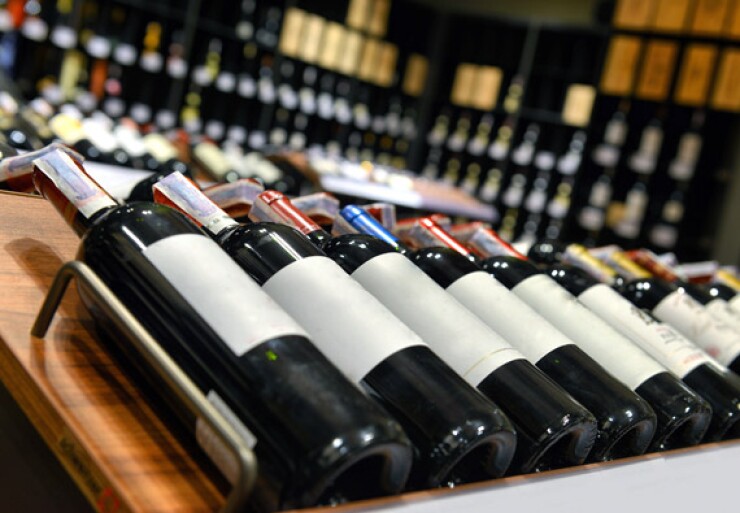Two Supreme Court cases have reshaped the way alcoholic beverages, particularly wine, can be marketed to consumers. And combined with the effects of the coronavirus pandemic, breweries and distilleries may also become more involved in direct-to-consumer sales, according to Jeff Carroll, general manager of Avalara for Beverage Alcohol — and that will open them up to sales tax nexus.
While opening up more markets, the cases have resulted in complexities as producers wrestle with tax regimes and regulations of the various states in which they do business, he indicated.
Granholm v. Heald, decided in May 2005, is considered the wine industry’s South Dakota v. Wayfair, acting as the trigger for 46 states now allowing direct-to-consumer shipments from wineries. In Granholm, the Supreme Court narrowly held that New York and Michigan laws that allowed wineries within the state to ship wine directly to consumers, but prohibited out-of-state wineries from doing likewise, were unconstitutional.
Prior to the case, Michigan and New York, like many other states, regulated the sale and importation of wine through three-tier systems that required separate licenses for producers, wholesalers, and retailers. Under the systems, in-state, but not out-of-state wineries could make direct sales to consumers. The combination of an increasing number of small wineries and a decreasing number of wine wholesalers led to a growth in direct sales to consumers because small wineries did not produce enough wine or have sufficient consumer demand for wholesalers to carry their products.
The court held that both Michigan and New York laws discriminated against interstate commerce in violation of the Commerce Clause, said Carroll.
“Direct shipping to consumers is an exception to the three-tier system,” he said. “The wine industry was very well organized. Granholm was the catalyst for enabling the direct-to-consumer channel in beverage alcohol. The period after Granholm saw an explosion of states changing their laws to allow wineries to ship directly to consumers. The end result is that 46 states now allow wineries to ship to consumers. That’s a substantial achievement, considering that those states represent 97 percent of the total U.S. population.”
“All 50 states have wineries,” Carroll noted. “Wineries, from any of the 50 states, can now ship directly into those 46 states. So, in Granholm, the Commerce Clause trumped the 21st Amendment.” The 21st Amendment to the Constitution repealed Prohibition — and also gave states the power to control the importation of alcohol.

More recently, in Tennessee Wine and Spirits Assn. v. Thomas, decided in June 2019, the court ruled that a Tennessee law requiring anyone applying for a retail license to sell alcohol to have lived in the state for at least two years. “Granholm was thought to apply only to producers. This clarified that Granholm was not limited to producers,” Carroll said. “Laws dealing with retailers and wholesalers are also subject to challenge.”
“We believe that the convergence of the SCOTUS decision from last year, combined with the COVID pandemic, is going to lead to a brand-new wave allowing breweries, distilleries and retailers much more access to direct-to-consumer shipping,” he said. “Breweries can now ship to 10 states representing 18 percent of the U.S. population. Distilleries can now ship to eight states, with 12 percent of the U.S. population. And retailers can now ship to 16 states, with 29 percent of the population. All of these are way behind wineries, but they’re catching up.”
The wine industry created a model direct-shipping bill several decades ago, observed Carroll. “It was adopted by the National Conference of State Legislators. It has a provision that shippers would be subject to sales and excise tax in a destination state. Most small wineries were shipping to multiple states — and they have an obligation to register for a sales tax permit to pay sales tax at the destination, even though they don’t have physical or economic nexus. This made it easier to get laws passed, and it was a remarkable achievement for the wine industry.”
Carroll believes that breweries and distilleries will benefit from this model. “There’s now a bill in New York allowing distilleries to ship in a similar model, using the direct shipping model bill. There could be a domino effect in which distilleries and breweries will use this playbook to get legislation enacted state by state, allowing direct to consumer shipments.”
Of course, with the increased opportunities come increased complexities in the rules and regulations of the varying jurisdictions, Carroll noted. These include registering with state liquor authorities, tax authorities, and adhering to volume limits, and observing other restrictions.
“Since Tennessee Wine, there have been roughly 10 states with challenges of laws allowing in-state retailers to ship to consumers but prohibiting out-of-state retailers from doing the same,” he said. "Wholesalers have a vested interest in not allowing sales from out-of-state retailers. Tennessee Wine could be the lynchpin to getting states over the hump in allowing retailers to ship to more states.”





